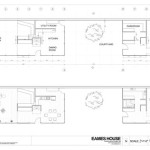The Plan of Roman Baths in Rome
The Roman baths, or thermae, were a cornerstone of Roman society, serving not only as a place for hygiene but also as social hubs, athletic centers, and even centers of learning and commerce. The grandeur and intricacy of their design, particularly in Rome, are testament to the Romans' mastery of architecture and engineering. Understanding the typical plan of these baths can provide insight into both their practical function and symbolic significance.
The Central Core: Bathing and Relaxation
At the heart of the Roman bath complex lay a series of rooms designed for bathing and relaxation. The sequence typically began with the apodyterium, a changing room where bathers could remove their clothing and leave their belongings in lockers. From there, they would proceed to the tepidarium, a moderately warm room meant for acclimatizing the body to the hotter temperatures ahead. This was followed by the caldarium, a hot room where the primary bathing took place The caldarium often featured a large, centrally located pool known as the natatio, as well as smaller pools or tubs for individual bathing. The frigidarium, a cold room, was the final stage of the bathing process, offering a refreshing contrast to the previous hot rooms. This sequence was intended to cleanse, invigorate, and relax the body.
Beyond the Baths: Services and Social Life
While the bathing sequence was the core function of the Roman baths, the complex offered a wealth of other services and facilities. The palaestra was a large, open-air courtyard dedicated to athletic activities, including wrestling, running, and ball games. The libraries housed scrolls and books, allowing for intellectual pursuits. Shops and taverns situated within the complex provided refreshments and other goods. This extensive array of services transformed the bath into a bustling social hub, serving as a meeting place for citizens from all walks of life.
Engineering Marvels: Heating and Water Management
The Romans' ingenuity is evident in the complex system of heating and water management employed in their baths. The hypocaust, a system of brick piers and vaulted chambers, channeled hot air from furnaces to heat the bath rooms. This efficient method ensured a constant supply of warm air for bathing, even during the colder months. The baths relied on aqueducts to deliver a continuous flow of fresh water, which was then channeled through a network of pipes and channels throughout the complex. Sophisticated drainage systems ensured the efficient removal of waste water, preventing the contamination of the surrounding environment.
The plan of Roman baths in Rome is a testament to the Romans' architectural prowess and their commitment to public health and leisure. The meticulous design of these impressive structures, with their sequence of bathing rooms, athletic areas, and additional services, illustrates their importance to the social fabric of the Roman world. Beyond their practical function, these places offered a haven for relaxation, socialization, and intellectual pursuits. The remains of these baths continue to fascinate and inspire us today, providing a glimpse into the lives of the Romans and their remarkable achievements in engineering and architecture.

Roman Baths World History Encyclopedia

The Roman Baths

View Article Baths Bathing As An Ancient Roman

General Information About Roman Baths

Bathing In Rome Baths Of Caracalla Piranesi

View Article Baths Bathing As An Ancient Roman

Bathing With Romans

Construction And Layout Baths Of Diocletian Piranesi In Rome

Roman Baths World History Encyclopedia

3 4 1 Thermen Quadralectic Architecture








